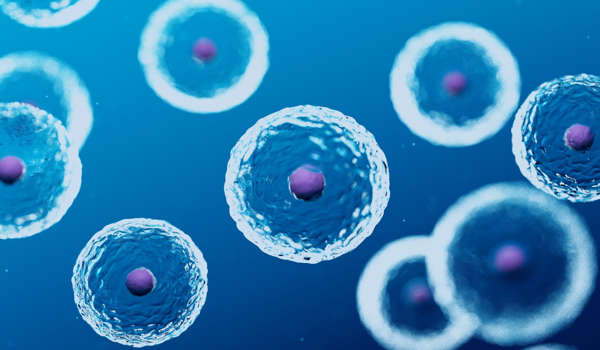What if a microscope enabled us to instantly explore the 3D microcosm of blood vessels, nerves, and cancer cells in virtual reality? What if it could provide views from multiple directions in real-time without physically moving the specimen, and it could do so up to 100 times faster than current technology?
Scientists at UT Southwestern worked with colleagues in England and Australia to develop and test a novel optical device that converts common microscopes into multiangle projection imaging systems. According to the researchers, the invention, which is described in an article published today in Nature Methods, has the potential to open up new avenues in advanced microscopy.
“It is a completely new technology,” says corresponding author Reto Fiolka, Ph.D., “although the theoretical foundations for it can be found in old computer science literature.” He and his co-author, Kevin Dean, Ph.D., are both assistant professors of cell biology and bioinformatics at UT Southwestern.
Scientists build and test a novel optical device that converts commonly used microscopes into multiangle projection imaging systems.
“It’s as if you’re holding the biological specimen in your hand, rotating and inspecting it, which is a remarkably natural way to interact with a sample. We can interactively visualize the sample in virtual reality on the fly by rapidly imaging it from two different perspectives “Dean is the director of the UTSW Microscopy Innovation Laboratory, which works with researchers from across campus to create custom instruments that take advantage of advances in light microscopy.
Currently, obtaining 3D-image information from a microscope necessitates a data-intensive process that involves assembling hundreds of 2D images of the specimen into a so-called image stack. The image stack is then loaded into a graphics software program, which performs computations to form two-dimensional projections from different viewing perspectives on a computer screen, according to the researchers.
“Those two steps take a long time and may necessitate the use of a very powerful and expensive computer to interact with the data,” Fiolka says.

The team discovered that it could form projections from multiple angles optically, avoiding the need to acquire image stacks and render them with a computer. This is accomplished through the use of a simple and low-cost unit consisting of two rotating mirrors inserted in front of the microscope system’s camera.
“As a result, we can do everything in real-time, with no discernible delay. Surprisingly, we can look at our samples from various angles ‘live’ without rotating the samples or the microscope “Fiolka explains. “We believe this invention could usher in a new paradigm for acquiring 3D information using the fluorescence microscope.”
It also promises lightning-fast imaging. While a full 3D image stack may necessitate hundreds of camera frames, the new method only necessitates one camera exposure. Initially, the researchers built the system using two common light-sheet microscopes, which necessitate a post-processing step to make sense of the data. This step is known as de-skewing, and it essentially involves rearranging the individual images to remove some distortions from the 3D-image stack. Initially, the scientists intended to perform this de-skewing optically.
They discovered that when they used an incorrect amount of “de-skew” when experimenting with the optical de-skewing method, the projected image appeared to rotate.
“This was the lightbulb moment. We realized that this could be more than just an optical de-skewing method; that the system could also be used with other types of microscopes “Fiolka stated. “This study confirms the concept’s broader applicability,” Dean says. “We’ve now used it in a variety of microscopes, including light-sheet and spinning disk confocal microscopy.”
They imaged calcium ions carrying signals between nerve cells in a culture dish and examined the vasculature of a zebrafish embryo using the new microscope method. They also captured images of cancer cells in motion and a beating zebrafish heart in real-time.
















